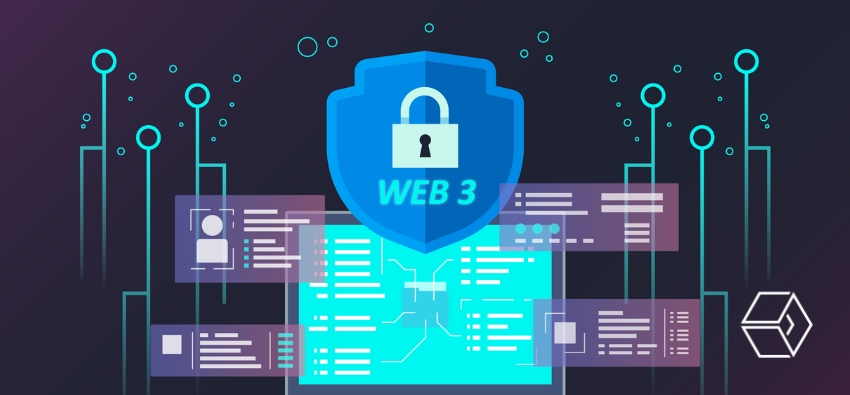
Web3 has revolutionized internet interactions. With the emerging characteristics of decentralization, blockchain technology, and transparency, Web3 has marked its dominance in the internet space by giving users the autonomy of their data and digital identity and enabling participation in decentralized applications (dApps). With the advent of cryptocurrencies, Web3 has revolutionized traditional practices of financial management and asset storage for new-generation investors, albeit with significant security risks.
The blockchain vulnerabilities, security glitches, and cloud-based threats of blockchain technology have put this digital financial ownership into a critical frame. From January 2024 onwards, around $415.67M was lost to hacks across various networks, as reported by QuillMonitor, a Web3 Hacks & Vulnerability Analytics Tool. A number of unaddressed critical vulnerabilities exist in the space, posing a direct threat to users of fraud and data hacking.
Smart contract logic vulnerabilities
Self-executing contracts like smart contracts are essential for facilitating transactions and payments without intermediaries in Web3 applications. However, these contracts are placed on decentralized blockchain networks that make users’ data susceptible to security challenges. Logic errors within the contract itself cause security vulnerabilities in smart contracts, potentially leading to legal issues and misuse.
Logic hacks on smart contracts in Web3 projects could exploit services and features, raising legal concerns. To mitigate these weaknesses, it is important to analyze all the characteristics of blockchain by examining the various stages, starting from planning up until testing. Understanding the evolution of both blockchains and the intelligence behind them is the only way we can address these vulnerabilities, ultimately leading to the resolution of safety issues within the Web3 domain.
Rug pull scams
DeFi and blockchain projects are at risk of crypto fraud, especially rug pulls. Creators leave projects after attracting a lot of money or user funds, making them worthless, and investors can’t access their investments at all.
One such example is the famous rug pull of ZKascino, where the decentralized casino platform project promised their users who bridged their Layer 2 to get their ETH back 1:1 in thirty days. Instead, it relocated over 10,500 ETH to Lido, an Ethereum staking service, coming to a valuation of $33 million.
The project team returned the crypto. However, the depositors were receiving ZKAS instead of ETH, unlike promised, which likely would be unlocked over 15 months. No one can easily say if someone is scamming in a rug pull or not. The scammers create attention about the project through social media buzz, among other tactics, to get more people involved before leaving completely with all assets liquefied.
Another pain point for users when identifying a rug pull is the credibility of a token or coin. Unfortunately, there are no prerequisites to list coins on most decentralized exchanges (DEXs), and coins can be listed without any charge. This is a loophole in the Web3 ecosystem that needs attention.
This is why, before investing in a Web3 project, one must conduct thorough research. To avoid the risks of rug pull scams, people should do an in-depth analysis of several components, ranging from the token pool to information about the founders and the project’s future plans.
Ice phishing
Ice phishing is a rising problem in Web3 since cybercriminals use the targets to sign undesirable blockchain transactions and gain access to the targets’ wallets. Such attacks often use a picture to make the victim believe that they are clicking on a link. Ice Phishing can also use the following techniques: data modifications with the help of third-party agents.
To solve this problem, secure blockchains are suggested for deploying dApps so that data cannot be manipulated and is kept secure. Web3 users are therefore advised to be careful with emails and double-check the URLs before clicking them. More specifically, logos, web addresses, and project titles can also be used to avoid such an attack even further.
Web3 security: Key strategies
The burning question among Web3 supporters and naysayers revolves around Web3’s security. Web 2.0 is best illustrated by social networking, blogging, and other consumer activities. None of the technologies discussed here were significantly different from the traditional, read-only Web 1.0.
Some of the points of concern for critics are as follows: The first aspect that was in question to the critics is the aspect of monetization and the ethicality of the action. Peculiar considerations that people have raised include ethical concerns about transforming user-generated content into a monetization strategy and the emergence of tech giants.
For instance, Google dominates the online advertising market; therefore, there are question marks regarding competition fairness and consumer privacy. However, with the emergence of new laws in privacy and data, including the California Consumer Privacy Act or the General Data Protection Regulation, Web3 is urgently needed.
Web 3.0 is a game changer in restoring public confidence in their rights over the internet and the decentralization of data and privacy from the major tech companies. While regulatory frameworks are necessary implementations that need to be made to Web3, like any technological pursuit, the safety of the internet lies not just on its technological updates but also on user education and internet hygiene.
To navigate the transformative power of Web3 positively, it is imperative to confront and address the critical security vulnerabilities inherent in blockchain technology. The decentralization that underpins blockchain offers unparalleled potential for innovation, yet it also presents unique challenges that demand vigilant and proactive security measures. While the regulatory bodies need to focus on strengthening cryptographic protocols and enhancing smart contract auditing in the industry, users also need to practice secure digital platforms, tools, and techniques.
Implementing strong and distinct passwords, enabling the use of two-factor authentication, frequently updating software, and avoiding links that seem fake increases safety while operating on the internet. Knowing the ins and outs of Web3’s inherent risks and how to address them for real asset protection on a digital security level is a must-have for all.













